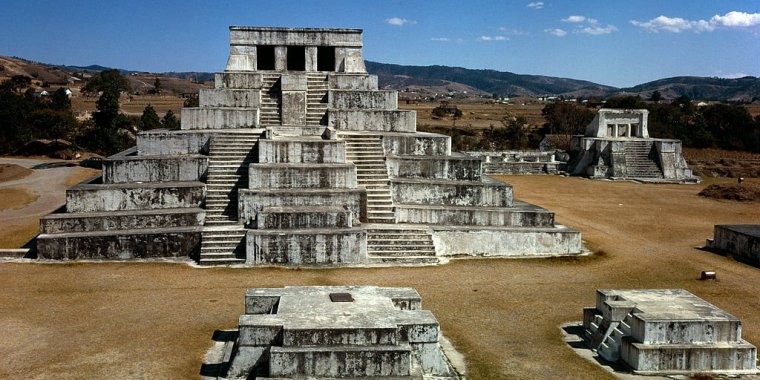| News / Science News |
Scientists measure severity of drought during the Maya collapse
The severity of drought conditions during the demise of the Maya civilisation about one thousand years ago has been quantified, representing another piece of evidence that could be used to solve the longstanding mystery of what caused the downfall of one of the ancient world’s great civilisations.

Maya civilisation. Image credit: HJPD
Researchers from the University of Cambridge and the University of Florida developed a method to measure the different isotopes of water trapped in gypsum, a mineral that forms during times of drought when the water level is lowered, in Lake Chichancanab in Mexico’s Yucatán Peninsula where the Maya were based.
Based on these measurements, the researchers found that annual precipitation decreased between 41% and 54% relative to today during the period of the Maya civilisation’s collapse, with periods of up to 70% rainfall reduction during peak drought conditions, and that relative humidity declined by 2% to 7% relative to today.
The role of climate change in the collapse of Classic Maya civilisation is somewhat controversial, partly because previous records are limited to qualitative reconstructions, for example whether conditions were wetter or drier.
Maya civilisation is divided into four main periods: the Preclassic (2000 BCE – 250 CE), Classic (250 CE – 800 CE), terminal Classic (800 - 1000 CE) and Postclassic (1000 CE – 1539 CE). The Classic period was marked by the construction of monumental architecture, intellectual and artistic development, and the growth of large city-states.
During the 9th century however, there was a major political collapse in the central Maya region: their famous limestone cities were abandoned and dynasties ended. And while the Maya people survived beyond this period, their political and economic power was depleted.
There are multiple theories as to what caused the collapse of the Maya civilisation, such as invasion, war, environmental degradation and collapsing trade routes. In the 1990s, however, researchers were able to piece together climate records for the period of the Maya collapse and found that it correlated with an extended period of extreme drought.
Now, the researchers analysed the different isotopes of water trapped within the crystal structure of the gypsum to determine changes in rainfall and relative humidity during the Maya downfall.
They measured three oxygen and two hydrogen isotopes to reconstruct the history of the lake water between 800 and 1000 CE. When gypsum forms, water molecules are incorporated directly into its crystalline structure, and this water records the different isotopes that were present in the ancient lake water at the time of its formation.
In periods of drought, more water evaporates from lakes such as Chichancanab, and because the lighter isotopes of water evaporate faster, the water becomes heavier. A higher proportion of the heavier isotopes, such as oxygen-18 and hydrogen-2 (deuterium), would indicate drought conditions.
By mapping the proportion of the different isotopes contained within each layer of gypsum, the researchers were able to build a model to estimate past changes in rainfall and relative humidity over the period of the Maya collapse. (University of Cambridge)
YOU MAY ALSO LIKE





